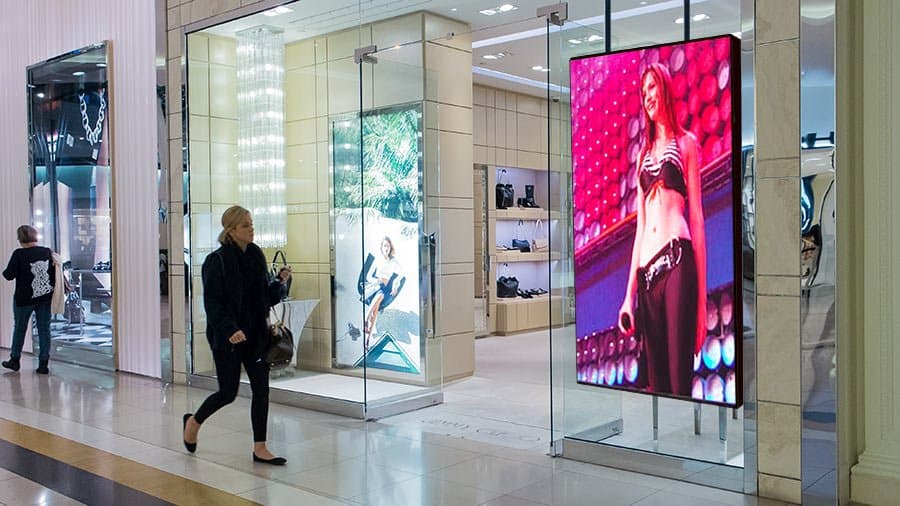Digital signage is an efficient tool to communicate with customers. It eliminates the need for costly print materials and helps increase retail business sales.
TV streaming digital signage can transform your screens into dynamic business displays. It is compatible with smart TV brands and media players with hardware-neutral software.
Easy to Manage
A vital component of a digital signage solution is the software that manages and updates the screens’ content. The digital signage platform enables businesses to update and manage their informational and marketing content remotely. The platform also provides business managers with the ability to monitor and gather insights from the data that is collected.
Many retail stores use streaming TV services for business as their primary screen to broadcast messages, alerts, and other important information to employees and customers. The displays can be used for cross-promotions, consumer information, and brand-enhancing programming. This content can be managed and updated via a cloud-based digital signage CMS (content management system) to keep customers, citizens, visitors, and travelers informed and up-to-date at all times.
Using TVs as digital signs also helps businesses cut costs by eliminating the need to print brochures, menu boards, and conventional billboards. By displaying engaging entertainment and informative messages, businesses can boost their bottom line by increasing customer loyalty and retention.
With a quick and easy setup, any TV or monitor with an HDMI input can be converted into a digital signage directory for commercial use. This turnkey solution can be implemented in offices, restaurants, airports, and other public spaces and is ideal for communicating with employees, providing directions, or displaying dynamic, informational content. Moreover, it is easy to integrate with any existing POS or back-office systems.
Easy to Maintain
Digital signage displays are becoming a common way for companies to connect with employees, customers, and visitors. They are easy to maintain and can be accessed remotely. The hardware required for a digital signage solution includes display screens, mounts, other equipment, and software to manage the content and device management. Digital signage software lets businesses connect their screens to CMS (content management system) to display live TV streams, RSS feeds, and other dynamic information.
Businesses that use digital signage can also save money on printed materials such as brochures, menu boards, and conventional billboards. This allows them to allocate their resources to other marketing campaigns and activities. In addition, using digital signage reduces the costs associated with printing and shipping these materials and the time it takes to update them.
In addition, a digital signage solution can provide the flexibility to add new features such as interactivity, directional signage, or streaming video to a display screen. This is possible because the CMS allows for the creation of dynamic content and is based on HTML5 technology, which is compatible with most operating systems. The business must have a reliable internet connection to get the best results from a digital signage display. A sluggish internet connection can cause the digital signage player to slow down or have other issues. Some digital signage solutions can maintain data display even if the internet connection is temporarily lost.
Easy to Update
Depending on the equipment businesses use, various options exist for upgrading their signage to play live TV. This may include using a digital signage display software solution, hardware, or both, with an integrated content management system.
Many retailers have existing TV screens that they can repurpose to serve as digital signage, but there are some minimum requirements that these screens need to meet to be optimized for this purpose. The first thing is that the TV must support connectivity with a device called a media player that can run digital signage software. This device will ensure the signage content is displayed at optimal resolution and quality on the screen.
A smart TV with a built-in media player supporting this signage solution is an excellent option for business owners. This can reduce the hardware cost to install and operate a digital signage display.
It’s essential to consider the location of a TV screen being repurposed for this purpose, as it needs to be positioned so that viewers can easily read it. Ideally, the TV should be located where it will not be affected by any source of light that could cause glare on the screen or make it difficult to see the displayed content. It’s also recommended to keep the TV as close to a power outlet as possible and to organize all cables behind walls or into other storage areas so they are not distracting to the viewer.
Easy to Scale
Digital signage helps to create a more positive perception of your retail company in the minds of your customers. It also helps you to build a connection with your shoppers, especially when they are in the store and looking for a specific item. For example, a customer could come in looking for a microwave oven and want to know how it works or what other products are available in the same price range. Your in-store digital signage system can answer those questions for them.
You can use free streaming player software to transform any TV or monitor with an HDMI input into a dynamic communication screen for your business. It is easy to use and can be updated remotely, and it doesn’t require any special hardware or a dedicated network. It can be used for displaying any content, from corporate messages to directories, and you can even add videos to your screens.
To level up your viewer experience, consider adding a sound system to your display. This may include a Bluetooth speaker, directional speakers, or surround sound, depending on the size of your space and what you are trying to achieve with your digital signage. You should also choose a location where your sign can be seen and not distracted by other visual stimuli, such as nearby paintings or graphics.

